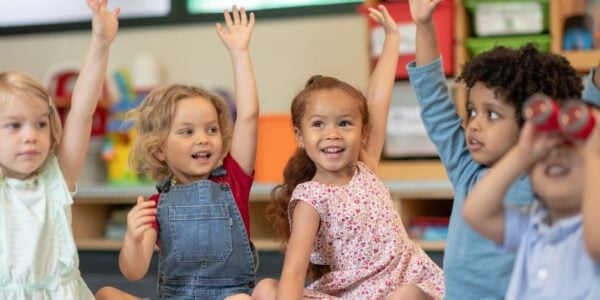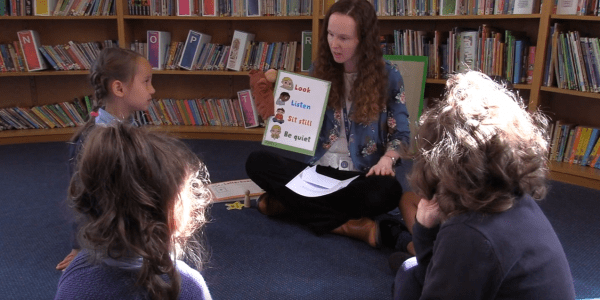
16/06/20
4 min read
There is a significant difference in pupils’ level of engagement with remote learning. New Nuffield-funded research from the National Foundation for Educational Research (NFER) raises particular concern about the impact of school closures on the learning of children from schools serving the most deprived pupils.
The research is based on findings from a representative survey of 1,233 school leaders and 1,821 teachers (total: 3,054) in England. The findings were collected between 7-17 May, when schools were only open to vulnerable pupils and children of keyworkers. Key findings include:
Pupil engagement is lower in schools with the highest levels of deprivation:
- Schools with the highest levels of pupil deprivation (those in the highest free school meal quintile) report 13 percentage point lower levels of pupil engagement compared to schools in the middle quintile.
- Teachers in the most deprived schools report 30% of pupils returning their last piece of work, compared to 49% of pupils in the least deprived schools.
- Teachers report that the following proportions of pupils are less engaged in remote learning than their classmates:
- Pupils with limited access to IT and/or study space (81%)
- Vulnerable pupils (62%)
- Pupils with special educational needs and disabilities (58%)
- Pupils eligible for Pupil Premium funding (52%)
- Young carers (48%).
Teachers report that, on average, just over half (55%) of their pupils’ parents are engaged with their children’s home learning:
- Teachers from the most deprived schools report that parental engagement is significantly lower than teachers in the least deprived schools (41% compared to 62%).
- Parental engagement is significantly lower among the parents of secondary compared to primary pupils (48% compared to 56%). This is likely to be a reflection of these parents believing that their secondary age pupils are more able to manage their own learning.
When the survey was conducted in May, teachers reported being in regular contact with, on average, 60% of their pupils. However, on average, less than half of pupils (42%) returned their last piece of set work.
- Whilst they are less likely to return work set, on average, primary school leaders say that 71% of pupils are getting involved in learning activities, while school leaders in secondary schools indicate that an average of 63% of pupils are getting involved in set work.
- School leaders believe that around one third of pupils (29-37%) are not engaging with set work at all.
- The majority of teachers (90%) believe that their pupils are doing less work than they would usually expect at this time of year.
Limited pupil access to IT at home is a significant challenge, particularly for schools with the highest levels of deprivation:
- School leaders report that 23% of their school’s pupils have limited access to IT at home. This is defined as one or more of the following issues: poor broadband access; little or no IT equipment in the home; having to share equipment with other family members. Teachers report this figure to be 27%.
- 93% of school leaders from the most deprived schools have some pupils with limited access to IT at home compared with 73% of school leaders from the least deprived schools.
Schools delivering learning content to pupils through online conversations (as part of a range of measures), have higher general pupil engagement levels (five percentage points) and an increased probability of having highly engaged disadvantaged pupils (eight percentage points).
- Schools using a virtual learning environment (VLE) to inform pupils about learning activities have an eight percentage points higher general pupil engagement level than schools not using VLEs.
- Schools using a VLE also have a 13 percentage points increase in the probability of having highly engaged disadvantaged pupils.
- Schools using telephone or video calls to inform pupils about learning activities have three percentage point higher levels of pupil engagement, relative to schools that do not use these methods.
- Teachers who set activities that involve consolidating previous learning or revising have a five percentage point higher level of engagement. These types of learning activity also increase the likelihood of disadvantaged pupils being highly engaged by six percentage points.
Despite high levels of leadership guidance and teachers’ readiness to provide remote learning support, there is currently a substantial deficit in curriculum coverage across schools:
- The majority of teachers (between 66% and 75%) rate their ability to offer remote learning support to pupils as ‘good or very good’ for most of the aspects included in the survey. Yet 80% of teachers report that all or certain areas of the curriculum are currently getting less attention than usual, across many subject areas, including all core curriculum subjects.
- Teachers aged between 20 and 29 are likely to have lower pupil engagement and a lower likelihood of their disadvantaged pupils being highly engaged.
- Teachers who feel well-supported by their school and teachers who teach Key Stage 5 are likely to have higher levels of pupil engagement, while teachers with a good quality working environment at home have a seven percentage point increase in the likelihood of their disadvantaged pupils being highly engaged.
Carole Willis, Chief Executive at National Foundation for Educational Research, said:
“There are considerable differences in the levels of pupil engagement in remote learning, particularly amongst the most disadvantaged pupils. This supports a growing evidence base highlighting the risk of the attainment gap widening as a result of this pandemic. There is a pressing need for a comprehensive and long-term plan to address this issue.
“The findings suggest there is a strong case for extending the government’s scheme to fund digital provision to all year groups, alongside all schools being supported to put in place effective virtual learning environments. There is also reinforcement of the crucial role of leaders in this situation, with a positive association between teachers feeling well-supported by their school leaders and pupil engagement. This is particularly significant for young teachers, with less experience.”
Josh Hillman, Director of Education at Nuffield Foundation, added:
“The shift to remote learning during lockdown has made the implications of children and young people’s unequal access to IT equipment and connectivity even more stark. It has also highlighted sharp disparities in the extent to which students are engaging with their school work away from classrooms.
“The government needs to ensure that all students have access to appropriate technology in their homes, and that teachers are fully supported in the coming months in addressing the disadvantage gap that is inevitably continuing to widen during the extended lockdown period.”
Later this week, NFER will publish the third report in this series exploring schools’ provision for vulnerable children and children of keyworkers during the COVID-19 pandemic.



















































